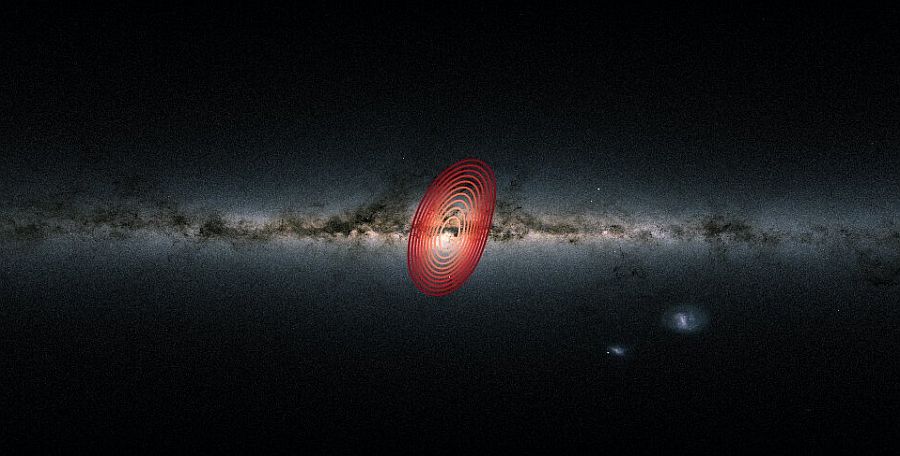
Data from the Sloan Digital Sky Surveys’ Apache Point Observatory Galactic Evolution Experiment (APOGEE) has hinted at the presence of possible “fossil galaxy” within the core of our Milky Way.
Researchers believe that the likelihood of the “fossil galaxy” having a collision with the Milky Way during its infancy, that is, somewhere around 10 billion years ago.
Astronomers termed it Heracles, after the divine hero in Greek mythology, the son of Zeus and Alcmene, who also happened to receive the gift of immortality during the creation of Milky Way.
Astronomers claim that Heracles is responsible for nearly a third of the Milky Way’s spherical halo. With such a huge chunk, it wasn’t visible before because its been embedded deep within the core.
So, what made it possible now?
Clouds of interstellar dust
To locate a galaxy within galaxy is not an easy task. The only way to figure out is to observe closely the chemical composition and motions of tens of thousands of stars said Ricardo Schiavon, one of the key members of the team behind the study.
To locate a particular set of stars within stars is like finding a needle in haystack. Firstly, they all almost look-alike and secondly, they are enveloped by clouds of interstellar dust. However, APOGEE made it possible to penetrate through the layers of dust and gas. Eventually, the researchers were able to dig deep unlike before.
Spectra of infrared light
Over its ten-year observational life, APOGEE targeted near-infrared light than the visible light. During this time frame, more than half a million stars, galactic bulge, bar, disk, and halo all across the Milky Way were observed. The study also included the previously dust-obscured inner most part of the galaxy.
As observations continued, the interstellar bodies were separated from each other on the basis of different chemical compositions and velocities. Stars present in the core were strikingly different than the ones present on the outer ring of our Milky Way.

Galaxies grow from inside out
By studying the differences in detail, researchers will be able to track their exact location and the origin of this fossil galaxy.
Generally, new galaxies are product of mergers of old galaxies over time, so the leftovers of older galaxies are often observed in the outer halo of Milky Way. But galaxies grow up from the inside out, hence earliest mergers require looking at the core, that is within the disc and bulge.
Takeaway
APOGEE is one of the most interesting surveys of disk and bulge of our galaxy by the Sloan Digital Sky Survey (SDSS). And this is not the end of its observations, astrophysicists claim the subsequent, that is, fifth phase of the SDSS has already begun taking data.
Milky Way Mapper comes next. The project aims to collect near-infrared and/or optical spectra of more than 4 million stars throughout the Milky Way and Local Group.
With its ten-year mission, APOGEE has proved that there is more content in our Milky Way. It is one of the tools that’ll help our curious mind to understand more about the cosmos that we call home. And with Milky Way Mapper coming up, we will have more info on stellar kinematics and chemical abundances in our cosmos.



